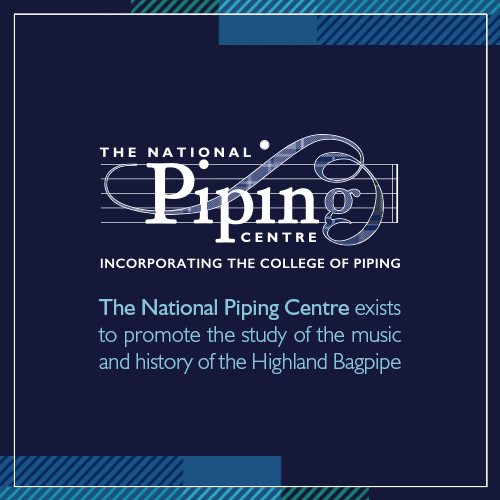
One of the most hotly tipped competitive solo pipers making their way through the B grade, multiple pipe band championship-winning John Dew (a recent graduate of the Royal Conservatoire of Scotland) presents his first solo recording effort, The High Bridge Walk. Let’s get real. John is someone I know. I consider myself if not a friend then at least a friendly acquaintance. In pop music, the writer/critic/columnist is a vaunted figure. Secretive and spinning like a coin in the Love/Hate relationship any creator has with someone who ultimately is trying to fill columns with words and achieve their minimum word count and –
Get paid
[Trumpets blare, wine and food flows from a horn of plenty, disco lights flash as heavenly choirs ring out in celebration of a bank transfer going through successfully]
The world of piping and pipe bands is exceedingly small so reviewing anyone’s anything runs the risk of being cornered in The Station Bar and ‘Having to hear about it’.
Or at least hear about why you are wrong.

What I’m getting round to is: I like this EP and you can trust me that it’s pretty good. Why? Because I am not getting paid to write this and I still felt enthusiastic enough to write a detailed opening.
The High Bridge Walk has five tracks of original material and arrangements of tunes you may already know (and if you don’t know, John’s here to let you know). What struck me first and foremost is the clarity of John’s technical execution. In the opening track, his take on Duncan Johnstone (the classic hornpipe by Pipe Major Donald MacLeod MBE) the well-rounded and full-bodied execution of John’s right hand work adds a new dimension to an old favourite. Confident guitar parts add a percussive feel and help to drive this track along. The rest of the set is a pleasing mixture of texture and flow ultimately giving us a confident and upbeat opening to this mini album.
Following on from this merry opener, Dew delivers a rolling and high-spirited piece in St Cyrus Beach. The conversation between John’s whistle parts is distinct and at no time do we feel that there is a fogginess or lack of clarity in musical definition. The three against two rhythms are playful and leave the listener with a warm and comfortable feeling. The composer has done a great job here of presenting a mental image of a rare warm, bright afternoon on the often bleak and cold north east coast of Scotland.
Sneaking up on us next is the track, The Sesh Chest Reels. The angular waltz is centred around the combative texture of the bagpipe’s top hand and is supported dreamily by harp-like guitar playing before a foot-stomping series of tunes grooves ahead. What I enjoyed most here was the feel John has put into the playing. Often playing thickly on the back end of the beat, John’s technique highlights the strengths of the melody and when the second pipe part begins I was reminded of the Victoria Police Pipe Band magnum opus Masterblasters for the depth of sound and unison. There are some distracting points in the arrangement where I think John is employing a change in the score to orchestrate some chaos. As much as I enjoyed the playing and the tunes, I would say that this feature did not quite come across and was distracting.

Settling back into whistle mode, A New Brew has a lightness that is reminiscent of sleepy Sunday afternoons in the autumn/fall. A ‘nothing to do and no rush to do it’ vibe permeates the first half of this track. The style of recording here feels like a friendly and casual sing-a-long rather than a super tight, metronomic production. When the feel picks up again, hints of Paul Simon’s Graceland peek through the trad. edifice. One sick bass line and this instrumental would have been a favored B-side from that highly influential record.
Our final track is a reminder of John’s formidable competitive chops. This is an excellent rendition of The Battle of Strome. According to the Piobaireachd Society, “This tune may relate to the struggle between Glengarry and the MacKenzies for possession of the castle of Strome on Loch Carron. The possible link with Glengarry’s March is described in Binneas is Boreraig.” This is a powerful way to end an EP. I feel that after all the reeling and whistling, John is making a statement about his creative and curation abilities in his chosen art form. That statement is “Stay tuned for more …”.
All in all, The High Bridge Walk is a solid effort for a first solo recording. I enjoyed a lot of what John has developed here and, again, that the recording shows of John’s ability as an instrumentalist. If I had any wants left over from absorbing this record it would be that some tracks could be beefed up in terms of backing: a little low end, some percussion, nothing too drastic. And the recording style is a bit dry and clinical. It would have been nice to hear some more of the pipe or whistle’s natural overtones.
If you like Gordon Duncan’s The Circular Breath then you’ll like The High Bridge Walk.
On my newly constructed scale of album rating where 1 is The Doors’ The Soft Parade (a low lower than the lowliest of the lows) and 5 is Hot Chocolate’s Everyone’s a Winner (an almost unmatchable highest of the highs) I’m giving The High Bridge Walk a solid 4.
• The High Bridge Walk will be released on Bandcamp and through John’s own website on October 10. Have a listen to the teaser on YouTube now.
More information at:
• https://jdewcomp.bandcamp.com/releases
• https://www.johndew-composition.com


